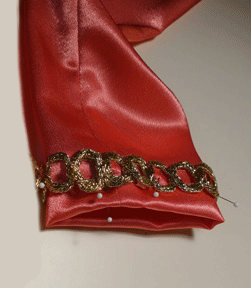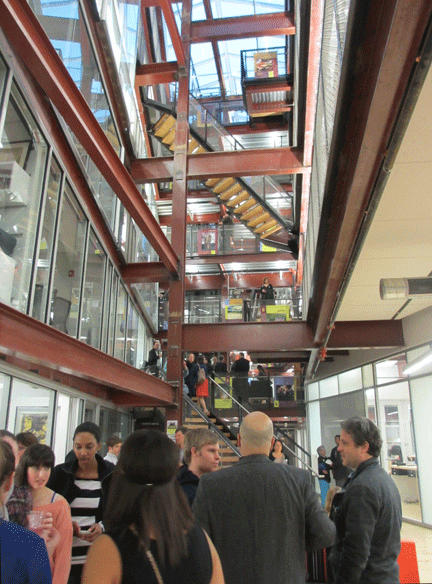This light-weight satin jacket’s sleeve is being trimmed with a metallic braid.
Woven fusible interfacing gives the cuff
stability. The fusing has been sewn to
the edge of the cuff, raised-stitched, turned over and fused to the sleeve’s
hem, as shown above.

The sleeve’s hem is turned up and pinned. The trim is then pinned one-half inch from the finished edge
of the cuff so that the trim’s placement is consistent with the trim on the
ensemble.
The trim is sewn to the sleeve with metallic thread. Because
sewing the ends of the rather thick braid into the seam would bulk up the seam the
ends of the braid are tucked under the braid. This worked really well as the
braid’s metallic yarns wrapped around each other, concealing the join.
Finally the sleeve’s hem is sewn under the braid rather than
at the top of the hem to prevent the hand hemming from showing.
The sleeves are now ready to be sewn into the armholes.
More later,
Laurel
Laurel
www.Laurelhoffmann.com- published books
www.ContemporaryFashionEducation.com- school
Facebook: Contemporary Fashion Education, Inc.
Link for Laurel's books on Amazon
P:215 884 7065, F:215 884 3727, C:610 908 7222
www.ContemporaryFashionEducation.com- school
Facebook: Contemporary Fashion Education, Inc.
Link for Laurel's books on Amazon
P:215 884 7065, F:215 884 3727, C:610 908 7222















